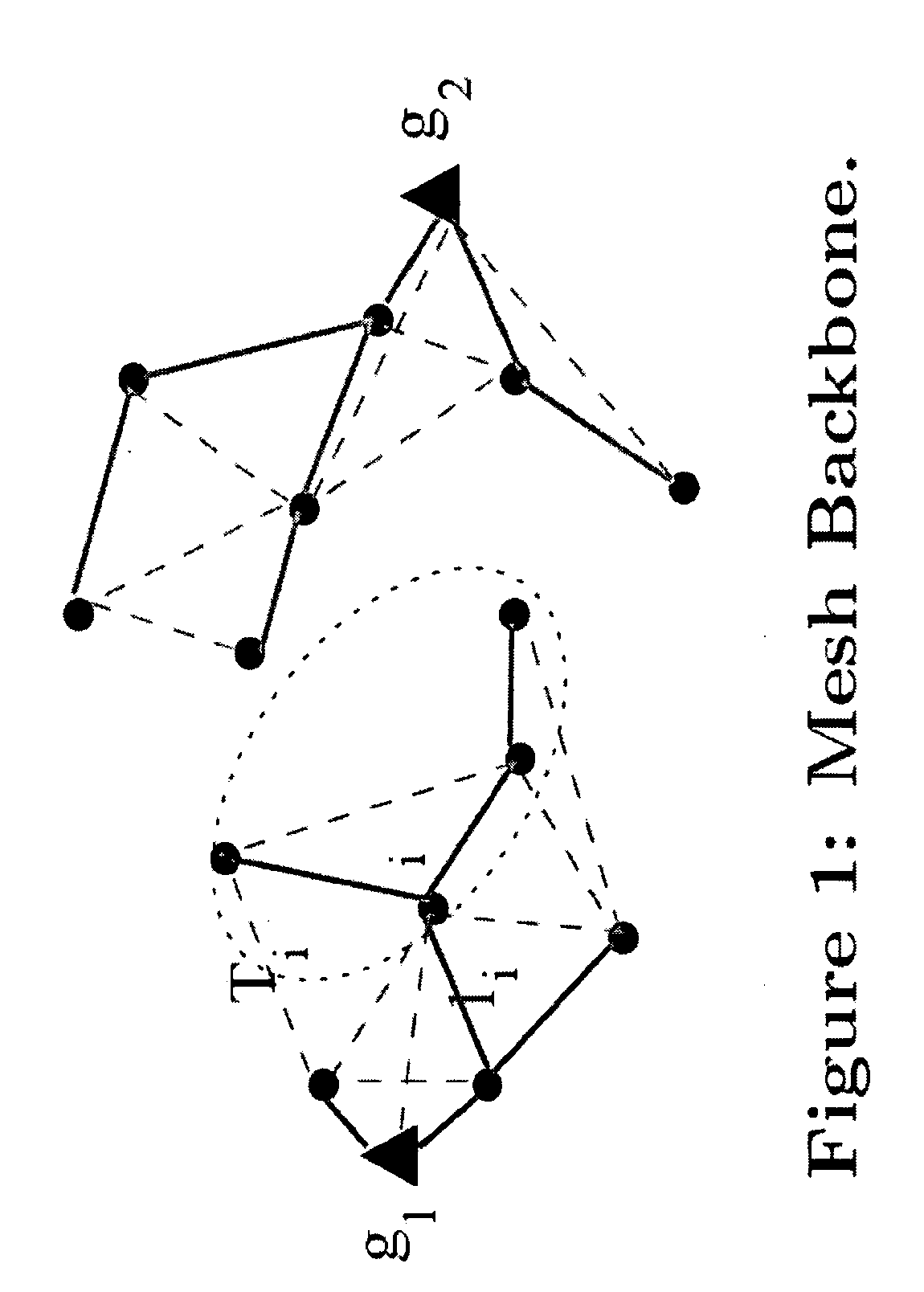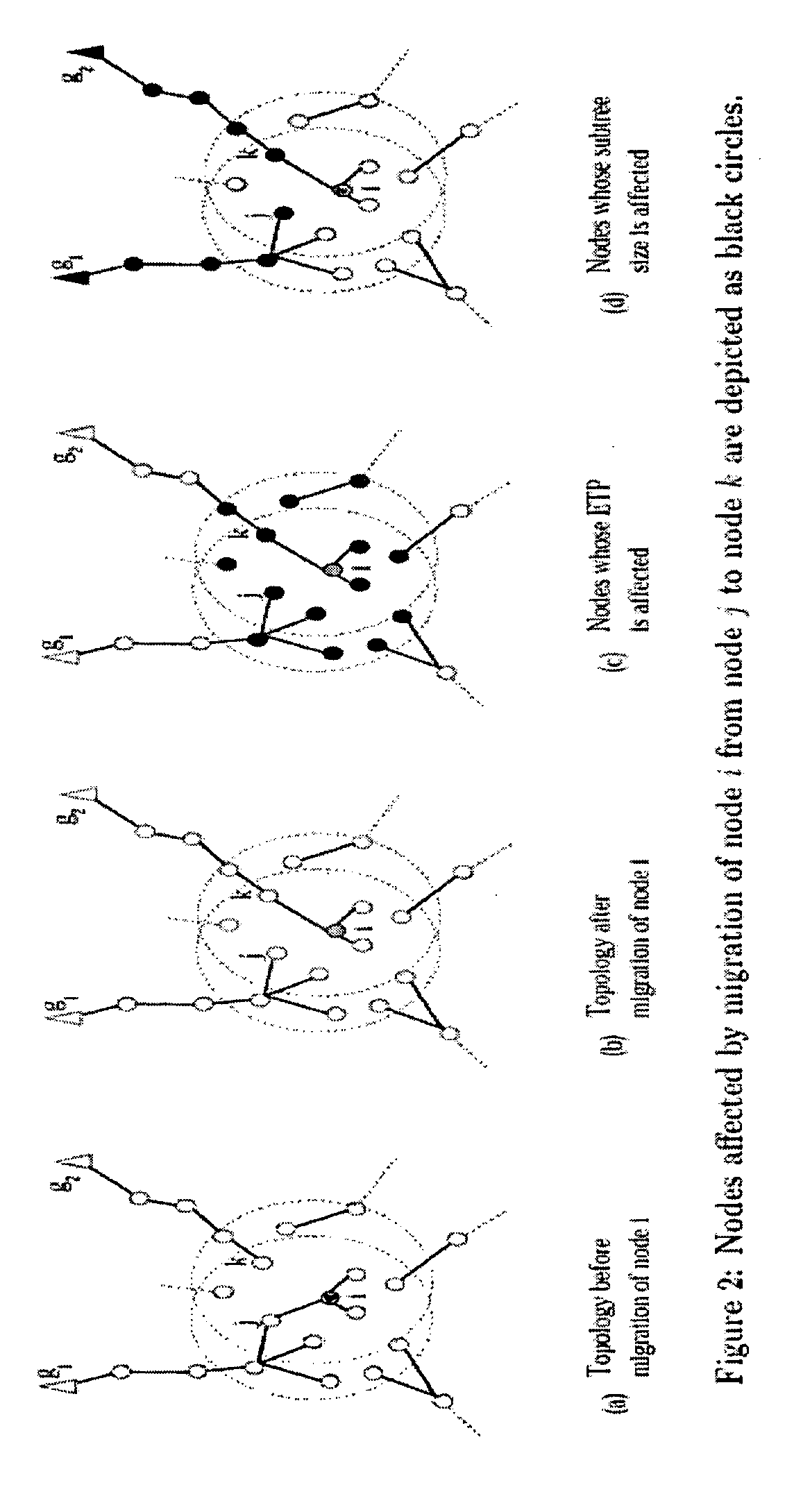Method for routing and load balancing in communication networks
- Summary
- Abstract
- Description
- Claims
- Application Information
AI Technical Summary
Benefits of technology
Problems solved by technology
Method used
Image
Examples
Embodiment Construction
[0033]In the invention, a mesh network comprises a plurality of nodes.
[0034]The node 1 shown on FIG. 3 comprises a communication interface 11, a processor 12, a volatile memory 13 and a non-volatile memory 14.
[0035]Consider a mesh network in which G is the set of gateways that have direct connectivity to the Internet, and M is the set of mesh nodes. Each mesh node Iε M connects to a single gateway, G(i) ε G, using other mesh nodes. In this case, mesh node i is considered to be associated with gateway G(i). Nodes are organized in disjoint trees Tgi, each tree rooted at a gateway node gi, ε G. Let T be the union of all these trees. Thus, T corresponds to one possible choice of routing. The subtree rooted at mesh node i ε M is denoted by Ti. Note that Ti includes node i. All the nodes have a single radio for mesh communication, and operate over a common channel. The latter assumption is used because if a single radio is available for mesh communication, monitoring of link qualities ove...
PUM
 Login to View More
Login to View More Abstract
Description
Claims
Application Information
 Login to View More
Login to View More - R&D
- Intellectual Property
- Life Sciences
- Materials
- Tech Scout
- Unparalleled Data Quality
- Higher Quality Content
- 60% Fewer Hallucinations
Browse by: Latest US Patents, China's latest patents, Technical Efficacy Thesaurus, Application Domain, Technology Topic, Popular Technical Reports.
© 2025 PatSnap. All rights reserved.Legal|Privacy policy|Modern Slavery Act Transparency Statement|Sitemap|About US| Contact US: help@patsnap.com



